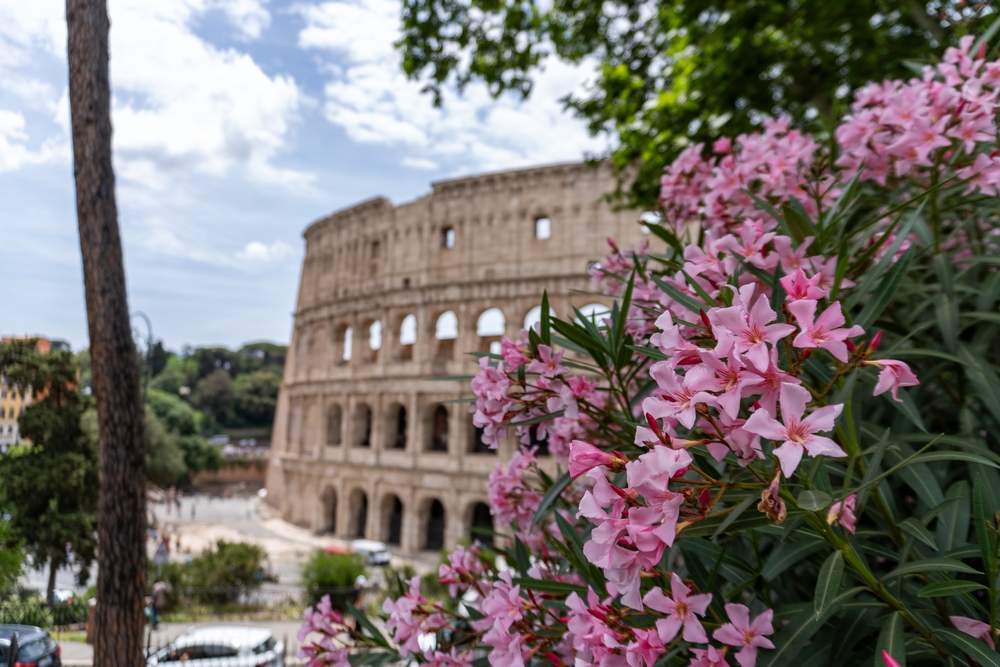From courtyards in Pompeii to statues in the Forum, flowers in Ancient Rome decorated homes, honored deities, and carried symbolic meaning. Romans believed certain blossoms bridged the human and divine. Through myth, ritual, and horticulture, they wove floral meanings deep into their culture. Below you’ll see how flowers played roles in myth, worship, and everyday gardens. You’ll also find twenty species you can still buy or grow today that once bloomed in Roman soil.
If you enjoy historical flower symbolism, you can also read about Ancient Greek flowers or Japanese flowers to compare traditions.
Myth, Deity, and the Flower Realm
In Roman mythology flowers, Flora was the goddess of flowers, spring, and blossoming plants. She had her own priest, known as the flamen Floralis, and was honored every year during Floralia, a six-day festival from April 28 to May 3. The celebration involved garlands, public games, and floral decorations across temples and homes. Her Greek counterpart, Chloris, was a nymph of flowers transformed into a deity by Zephyrus, the west wind.
Roman poets and authors often linked specific flowers to gods and myths. For instance:
- Roses were tied to Venus and Adonis, symbolizing love and sacrifice.
- Violets represented modesty and mourning, said to spring from Venus’s tears.
- Laurel belonged to Apollo through the story of Daphne’s transformation.
These associations appear across Roman frescoes, mosaics, and sculpture, revealing how deeply floral imagery shaped religious and aesthetic life. The presence of these motifs in Pompeii’s preserved gardens and domestic murals shows that flowers were not only for beauty but also for spiritual expression.
Key Flowers in Ancient Rome: Symbolism and Modern Relevance
Below are some of the most iconic flowers found in Roman literature, art, and archaeology, along with where you can find them today and what they’re used for.
1. Rose (Rosa)

Ancient meaning: The rose symbolized love, secrecy, and remembrance. It was central to the Rosalia, a Roman festival where roses were placed on graves to honor ancestors.
Garden use: Romans cultivated roses in courtyards, temples, and along walls for fragrance and decoration.
Modern availability: You can find roses year-round at most florists or order them online.
Today’s uses: Roses remain a global symbol of love and are used in weddings, perfumes, and skincare products.
2. Lily (Lilium candidum)
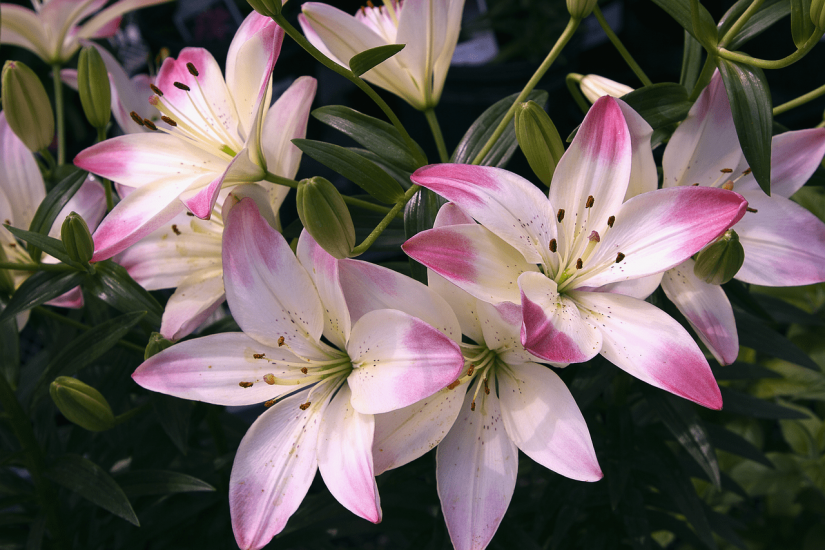
Ancient meaning: Linked to Juno, goddess of marriage and motherhood, lilies represented purity and fertility. According to myth, lilies sprang from drops of her milk.
Garden use: Romans planted lilies near fountains and shaded walkways for visual balance.
Modern availability: Grown across Europe and North America, lilies are available at garden centers or order lilies online.
Today’s uses: Common in weddings, Easter celebrations, and home gardens for their elegant form.
3. Violet (Viola odorata)
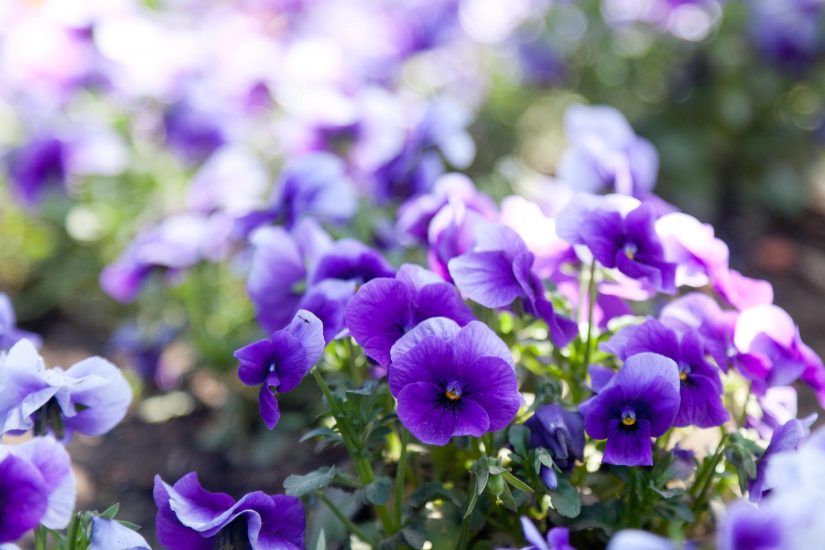
Ancient meaning: Associated with modesty, remembrance, and mourning.
Garden use: Violets grew near shaded walls and colonnades in Roman villas.
Modern availability: Violets are easy to grow in temperate climates and available from most garden shops.
Today’s uses: Popular in perfume making, edible garnishes, and memorial arrangements.
4. Iris (Iris germanica)

Ancient meaning: Named for the goddess Iris, messenger between gods and humans, symbolizing communication and faith.
Garden use: Irises lined pathways and fountains for vertical contrast.
Modern availability: Common in spring bouquets or available for order online.
Today’s uses: The fleur-de-lis design traces back to the iris, representing royalty and purity in many cultures.
5. Poppy (Papaver somniferum)
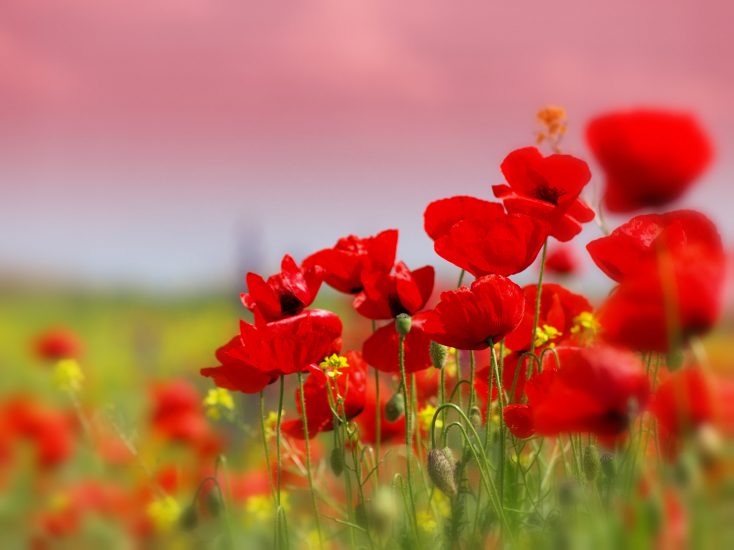
Ancient meaning: Associated with sleep, dreams, and death, tied to Morpheus, god of dreams.
Garden use: Romans admired poppies for their vivid red petals.
Modern availability: Poppies bloom in spring and early summer; you can find seeds or poppy single stems online.
Today’s uses: Poppies are used for remembrance (especially on Armistice Day) and for natural medicinal extracts.
6. Carnation (Dianthus caryophyllus)
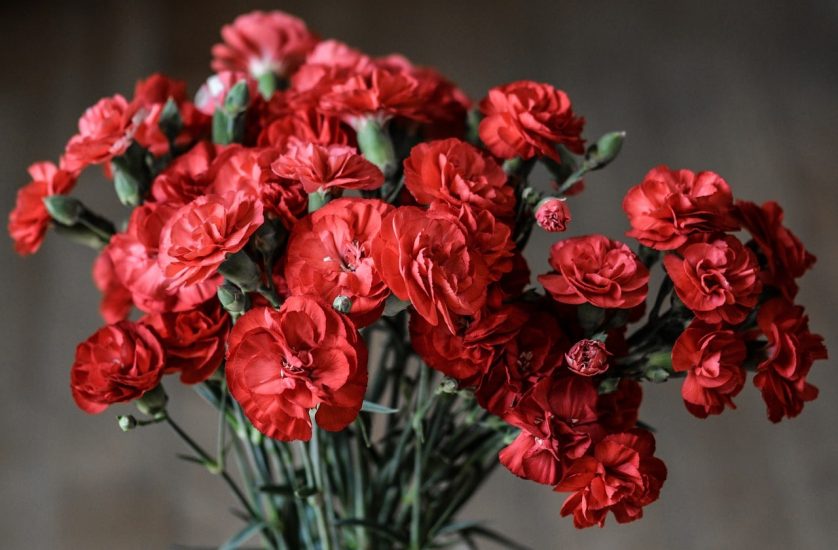
Ancient meaning: Possibly derived from corona (wreath), carnations symbolized admiration and loyalty.
Garden use: Common in garlands and festive crowns.
Modern availability: Available globally, often included in mixed arrangements or order carnations online.
Today’s uses: Popular in event decorations and as long-lasting cut flowers.
7. Narcissus (Narcissus poeticus)

Ancient meaning: Linked to the myth of Narcissus, representing vanity and transformation.
Garden use: Planted in spring beds alongside irises and hyacinths.
Modern availability: Widely sold as daffodil bulbs in nurseries.
Today’s uses: Common in gardens and springtime bouquets.
8. Hyacinth (Hyacinthus orientalis)

Ancient meaning: Imported from Greece, symbolizing rebirth and sorrow.
Garden use: Added fragrance to Roman villas.
Modern availability: Found in most garden centers or hyacinths online.
Today’s uses: Grown for spring fragrance indoors and outdoors.
9. Oleander (Nerium oleander)

Ancient meaning: Associated with endurance and Mediterranean beauty.
Garden use: Planted as ornamental shrubs in warm climates.
Modern availability: Sold as landscape plants in coastal regions.
Today’s uses: Valued for its evergreen foliage; caution, it’s toxic if ingested.
10. Myrtle (Myrtus communis)
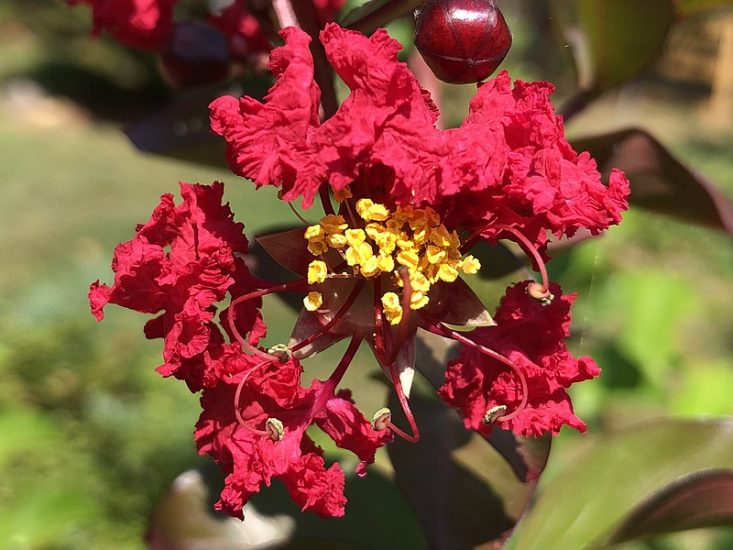
Credit Wiki Commons: https://commons.wikimedia.org/wiki/File:2021-08-11_11_20_19_Red_Rocket_Crape_Myrtle_flowers_along_Tranquility_Court_in_the_Franklin_Farm_section_of_Oak_Hill,_Fairfax_County,_Virginia.jpg
Ancient meaning: Sacred to Venus, symbolizing love and fertility.
Garden use: Planted near courtyards or along garden paths.
Modern availability: Myrtle is grown in Mediterranean climates or found through specialty nurseries.
Today’s uses: Used in wedding bouquets, essential oils, and perfumes.
11. Laurel (Laurus nobilis)

Ancient meaning: Symbol of victory and poetic inspiration, sacred to Apollo.
Garden use: Used as hedges or in pots near entryways.
Modern availability: You can grow bay laurel at home or buy laurel wreaths online.
Today’s uses: Culinary bay leaves and graduation wreaths both descend from this ancient tradition.
12. Gladiolus (Gladiolus italicus)

Ancient meaning: Represented strength and victory, from the Latin gladius (sword).
Garden use: Tall spikes provided contrast in Roman flower beds.
Modern availability: Common summer flower available from florists.
Today’s uses: Popular in formal events and garden borders.
Additional Flowers in Ancient Rome
Daisy (Bellis perennis) and Chrysanthemum (Chrysanthemum coronarium)
Ancient meanings: Daisies symbolized innocence; chrysanthemums represented longevity and autumn renewal.
Garden use: Found in domestic gardens and floral mosaics.
Modern availability: Daisies and chrysanthemums are sold year-round at most florists.
Today’s uses: Common in spring arrangements and fall decor.
Anemone, Cyclamen, Marigold, Foxglove, and Pansy
Ancient meanings: Each had unique associations. Anemones symbolized rebirth, cyclamen humility, marigolds devotion, foxgloves healing, and pansies thoughtfulness.
Garden use: Found in Roman garden reconstructions for color variation.
Modern availability: All are widely cultivated today.
Today’s uses: Used in decorative gardens and symbolic bouquets.
Gardens, Cultivation, and Social Symbolism
Roman gardens, known as horti, were both private sanctuaries and public status symbols. They combined flowers, herbs, fruit trees, and sculptures in balanced compositions. Wealthy Romans used garden slaves (topiarii) to prune and shape hedges. They imported rare bulbs from the East and cultivated flowers out of season in controlled environments.
Flowers were central in rituals and celebrations:
- Floralia honored Flora with garlands and public dances.
- Rosalia celebrated remembrance with rose offerings.
- Saturnalia included greenery and floral decor.
Pliny the Elder described rose cultivation near Paestum, a region famous for commercial flower farming. The abundance of floral trade indicates how Rome’s horticulture supported both religious practice and luxury consumption.
Flowers in Art and Daily Life
Floral motifs covered walls, pottery, textiles, and jewelry. In Pompeii’s House of the Vettii, murals depict roses, lilies, and violets woven into mythological scenes. Mosaic floors often included vines, poppies, and laurel leaves, symbolizing eternal life and abundance.
Romans also used flowers in:
- Cosmetics and perfumes, such as rose and violet oils.
- Medicines, especially poppy extracts and myrtle tonics.
- Dining, where petals flavored dishes and wines.
These practical and symbolic uses show that for Romans, flowers represented both nature’s beauty and its utility.
Where to Find Ancient Roman Flowers Today
Many of these ancient species still grow across Italy and the Mediterranean. You can see original specimens or reconstructions in:
- Pompeii Archaeological Park, where peristyle gardens bloom again.
- Villa d’Este in Tivoli, known for its Renaissance reinterpretation of Roman gardens.
- Rome’s Botanical Garden (Orto Botanico di Roma), which features species cultivated since antiquity.
For modern admirers, you can order flowers online or visit garden centers that specialize in Mediterranean plants like myrtle, laurel, and oleander.
Legacy of Roman Floral Culture
The legacy of flowers in Ancient Rome lives on in art, literature, and modern floristry. The Roman belief that flowers connect humans to the divine still resonates. Whether through the laurel crown of an academic graduate, a rose bouquet for love, or a poppy worn for remembrance, these traditions trace back to Roman gardens.
If you feel inspired by these meanings, explore our guides on flowers around the globe to see how cultures worldwide have celebrated flowers through myth and beauty. You can also order flowers online to bring a touch of ancient symbolism into your home.
Shop All
